
Trees Tell Us about the Geological Features 500 Years Ago and Climate Change
vol.5Sasaki Kaname of Workshop Tokati no kinoutuwa / Makubetsu-cho

Translation by Xene Inc.

I thought about making wood samples at first.
In 2002, we opened a workshop at the schoolhouse of the former Nakasato Elementary School. For 20 years up to then, Sasaki Kaname, who was born and raised in Makubetsu Town, had worked at the local wood processing factory. The factory mainly handled wood that could be easily supplied and processed, such as Japanese oak. Trees for wood chips were collected from the natural forest, but were mixed with unidentified trees. Mr. Sasaki thought wood samples of various colors and characters for comparison would be interesting.
Nevertheless, the wood processing factory closed down, due to the import of low-priced woods. Mr. Sasaki thought it would be difficult to obtain wood from Hokkaido, so he collected many trees as wood samples from the local mountains and created a business to sell them to woodworkers. As rare types of woods were collected, Mr. Sasaki began to gain the attention of experts of woodwork techniques and wood craftsmen.
Before long, also Mr. Sasaki’s interest to “create things” increased. As the wooden dishes he made at home began to gain recognition at design competitions, he decided to establish a workshop which specialized in different kinds of wood from Hokkaido. “Even if I keep making dishes with the same shape and size, they are not the same since the annual rings and hues of the wood vary. Nothing can compare with this exciting job,” Mr. Sasaki smiled.
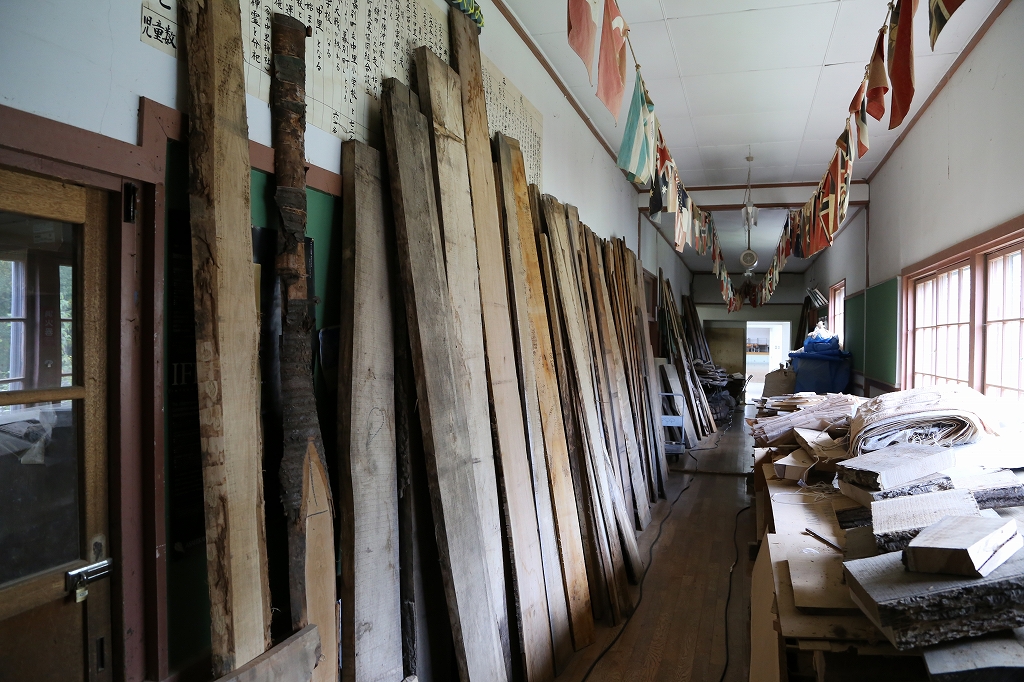
It is amazing to see how many types of wood line the corridor
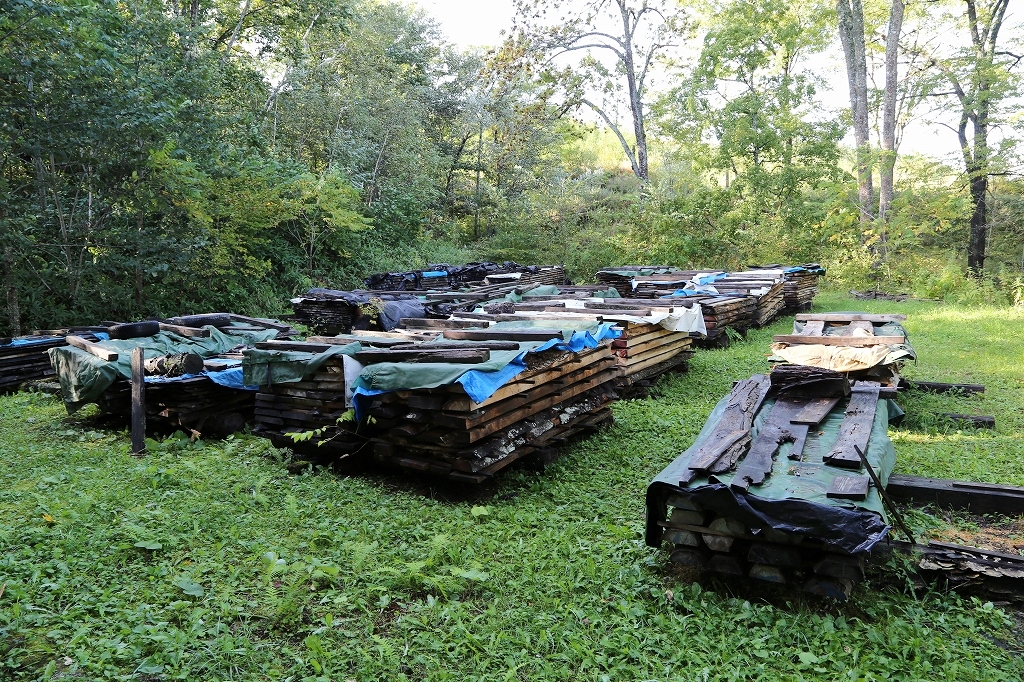
Wood is seasoned for a year or two in the same environment as open air, and stacked in the backyard.
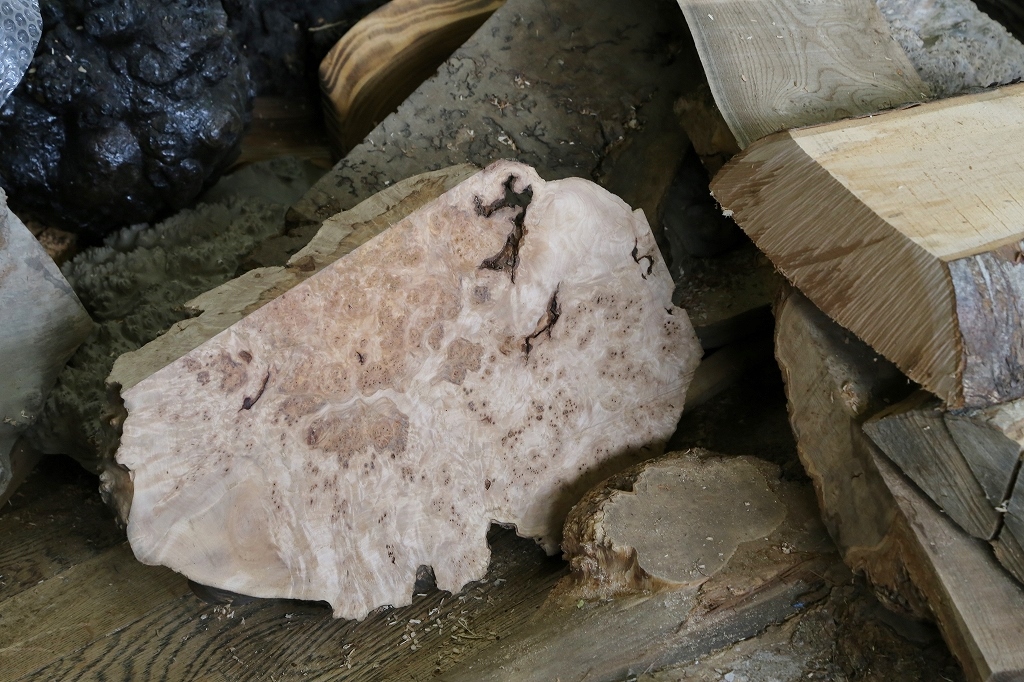
Knotty wood which has become increasingly rare.

The workshop bears the traces of a classroom.
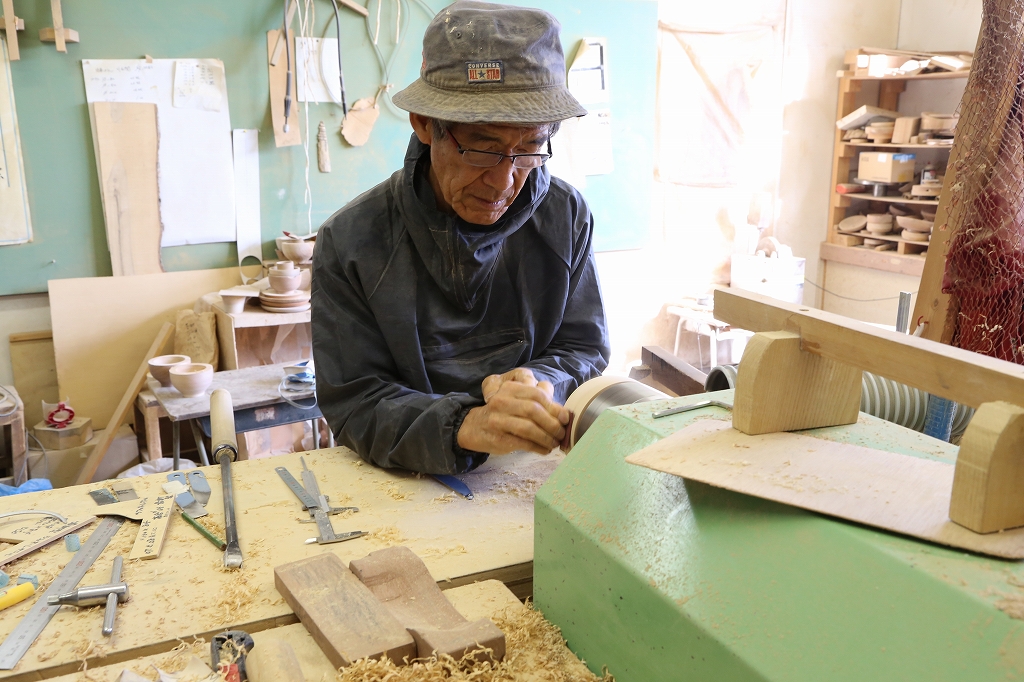
Fewer workmen, even in Japan, use a lathe.
Feel the life in the tree knot, learn about the Tokachi River from driftwood.
“Since knots were too hard to process, they were once considered a nuisance in industrial use timber. However, they are now popular in craftwork,” Mr. Sasaki relates. Originally involved in the lumber industry, he is blessed with a good supply route for wood. Mr. Sasaki knows the essential nature of trees, and so he can create dishes with a sense of live, as if one annual ring springs from another.
Using driftwood from Tokachi River is also characteristic art of Mr. Sasaki. “More than 80% of the driftwood found on the river shore is Japanese elm. When applying a stain, it is difficult to dye the inner part. Driftwood found in the earth layer approx. 500-600 years old at the Tokachi River is naturally dyed by reaction with iron in the river and the tannin of the wood. Since the same type of wood from the Satsunai River does not become the same color, it is said that the wood is dependent on the geologic features and the components of the river water.”
Mr. Sasaki and his son, Makoto, a graphic designer, are the creators. How many decades will it take to change that huge mountain of wood into the world as dishes?”

The goal is to make the bowl as thin as possible.
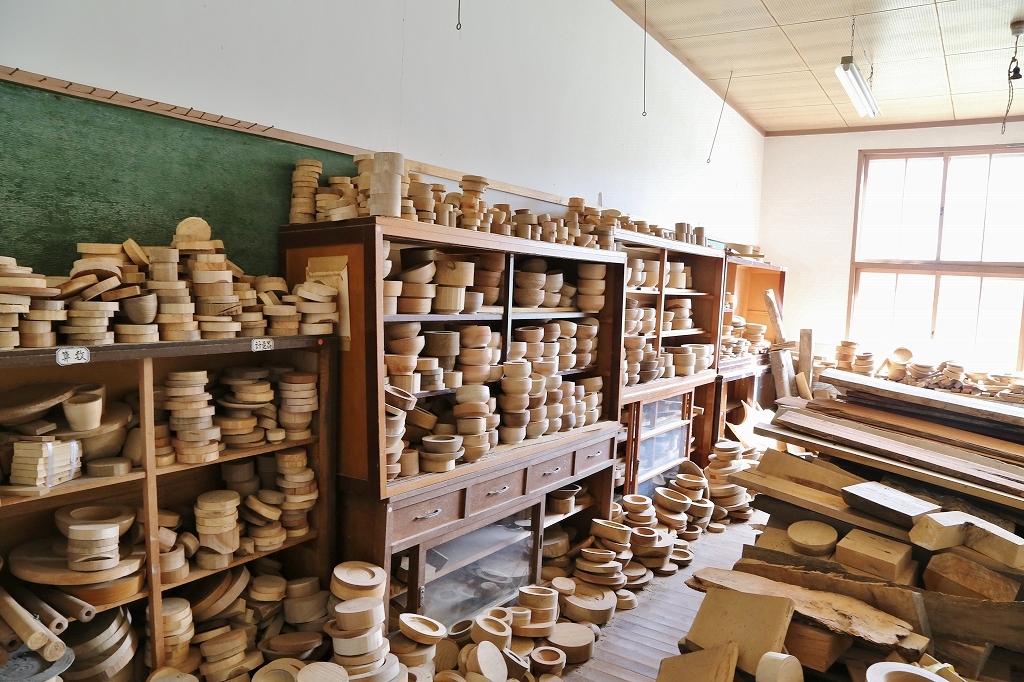
The dishes waiting to be finished fill the classroom to the brim.
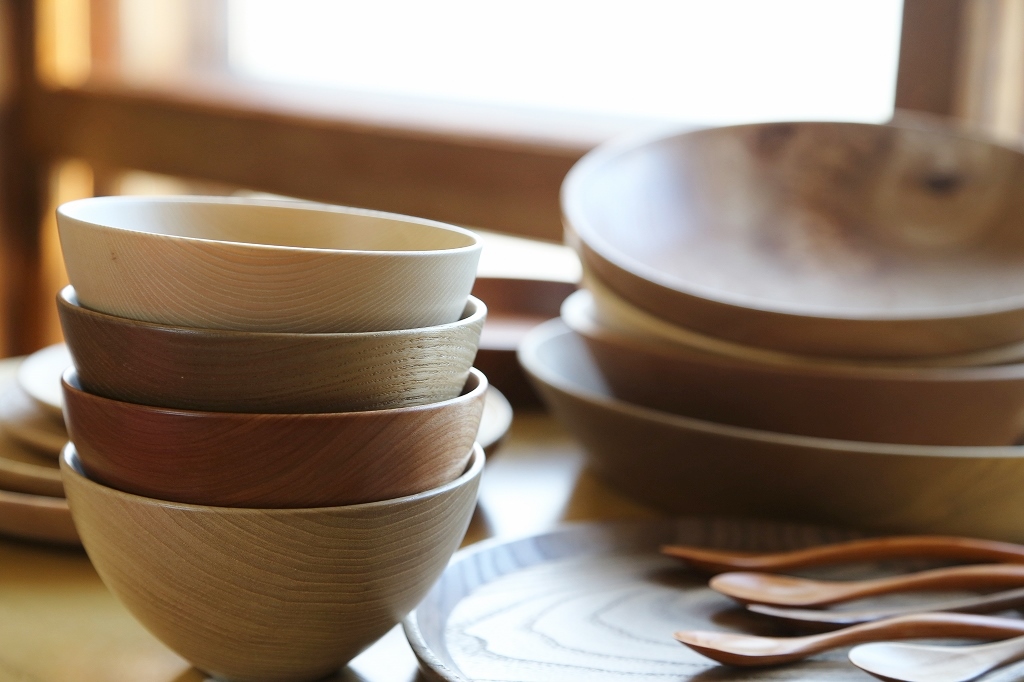
The color of each dish differs one from another. They are remarkably colorful.
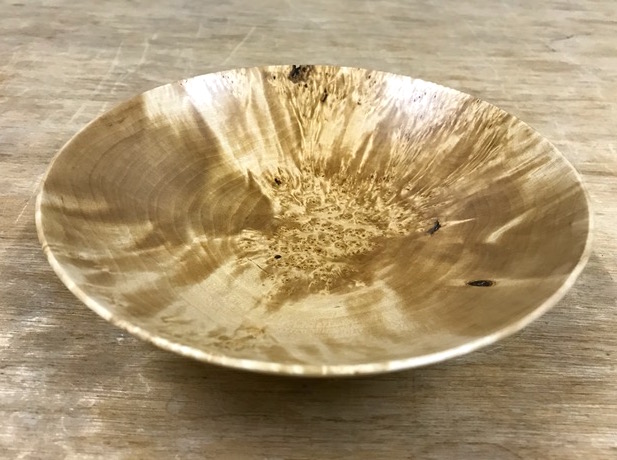
A fantastic pattern like this appears when knotty wood is used(Photographs by Sasaki Makoto)
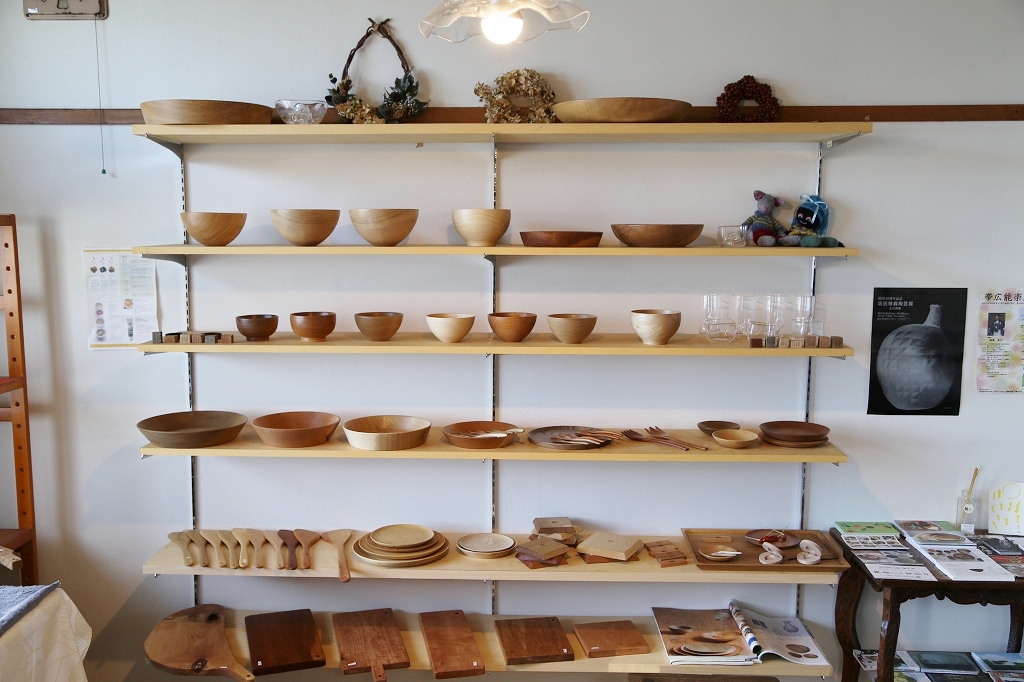
Mr. Sasaki’s works are displayed at the café & gallery “NANAKAMADO” remodeled from the house of Mr. Sasaki’s parents
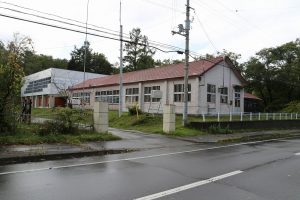
Workshop Tokati no Kinoutuwa
Manabiya Nakasato, Nakasato 155, Makubetsu Town, Nakagawa-gun, Hokkaido
TEL・FAX:0155-56-3123
Web Site

cafe&gallery NANAKAMADO 
297-24 Satsunaikasuga-machi, Makubetsu Town, Nakagawa-gun, Hokkaido
Hours: 11:00 to 17:00
Closed: Tuesdays, Wednesdays, and Thursdays
TEL:0155-56-3573
Web Site



